
Upon arriving in the harbor town of Klaipėda, Lithuania, where we were scheduled to catch a ferry to Kiel, Germany, we first timed a practice run to the ferry terminal before randomly picking a close-by area at the Danė River near Old Town to loiter until it was time to queue for check-in.
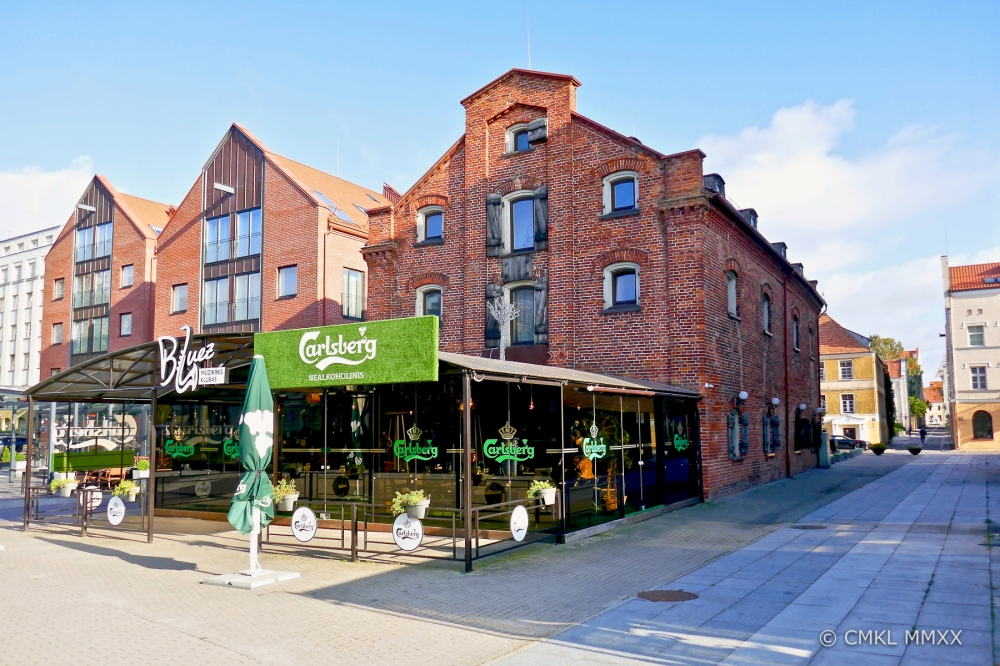
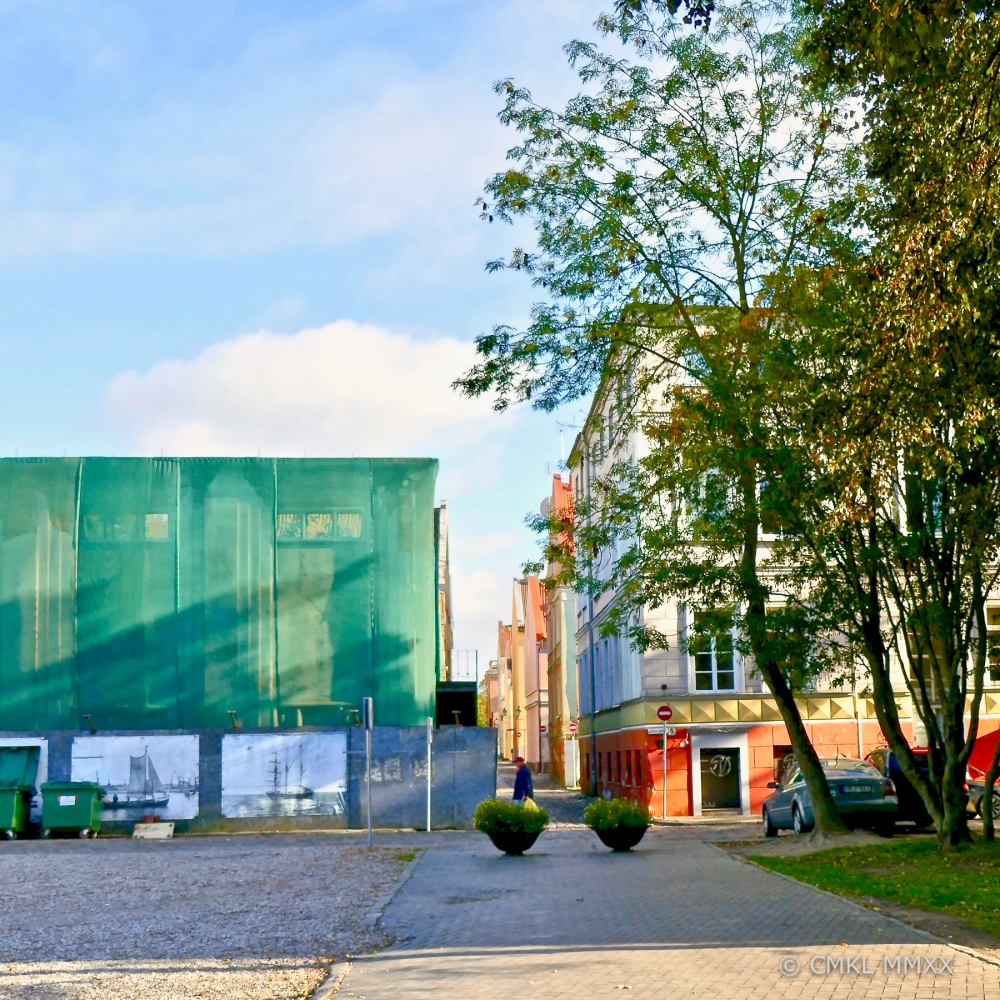
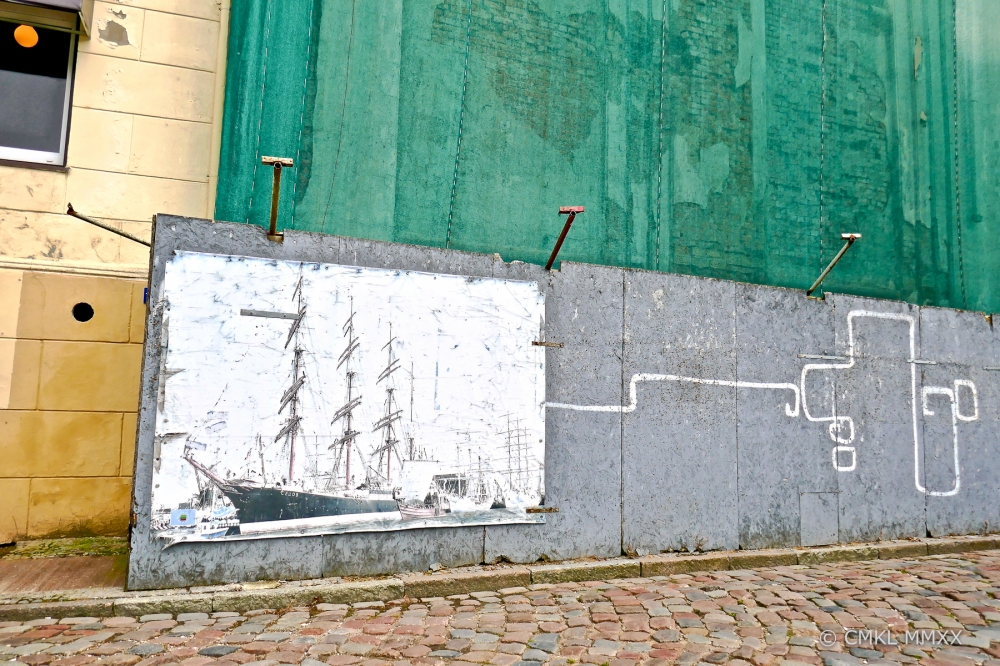

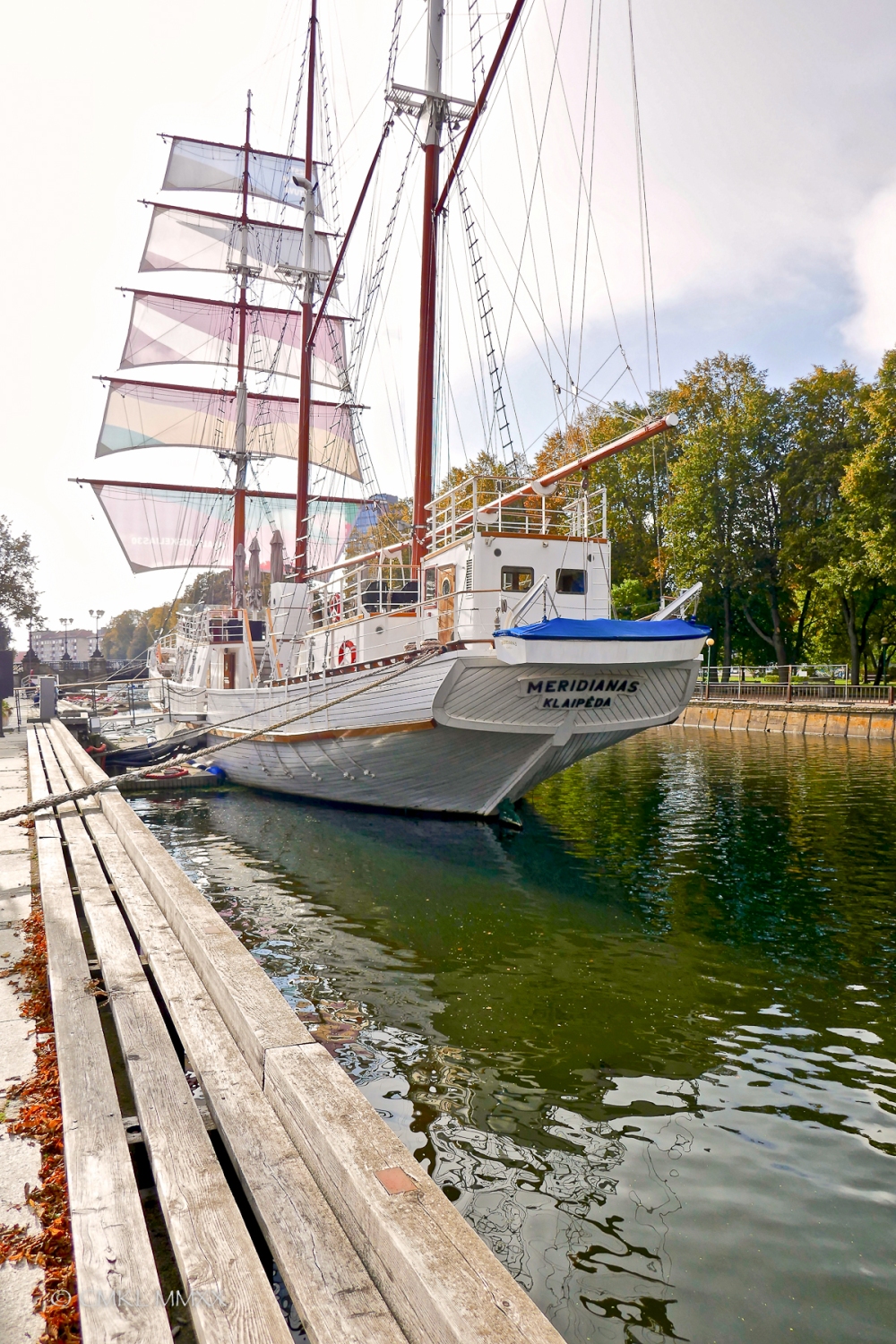
Restored and permanently moored at Danės Quai, the former training vessel Meridianas awarded many a young helmsman his sea legs at the Klaipėda Navigation School. Since a recent restoration, the Meridianas serves as a museum and restaurant.
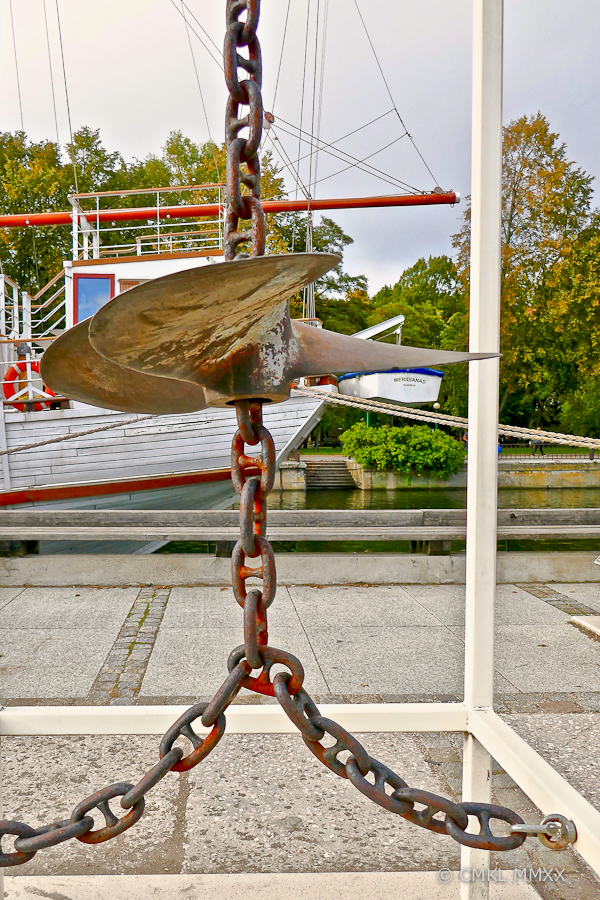
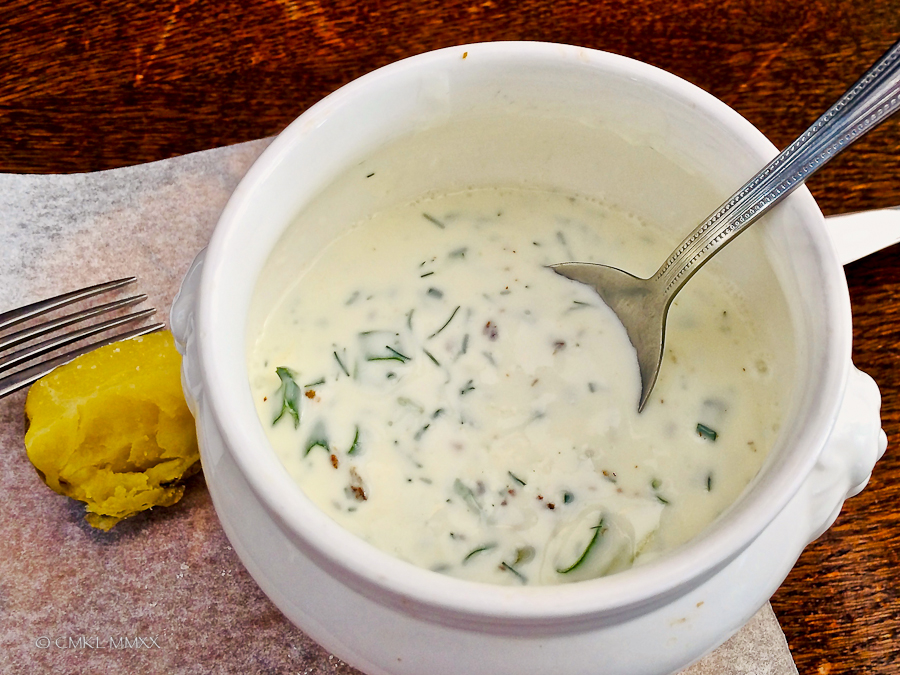
After one last dish of herring in cream, we retrieved our car and proceeded to the Klaipėda Central Terminal to check in with the Regina Seaways.
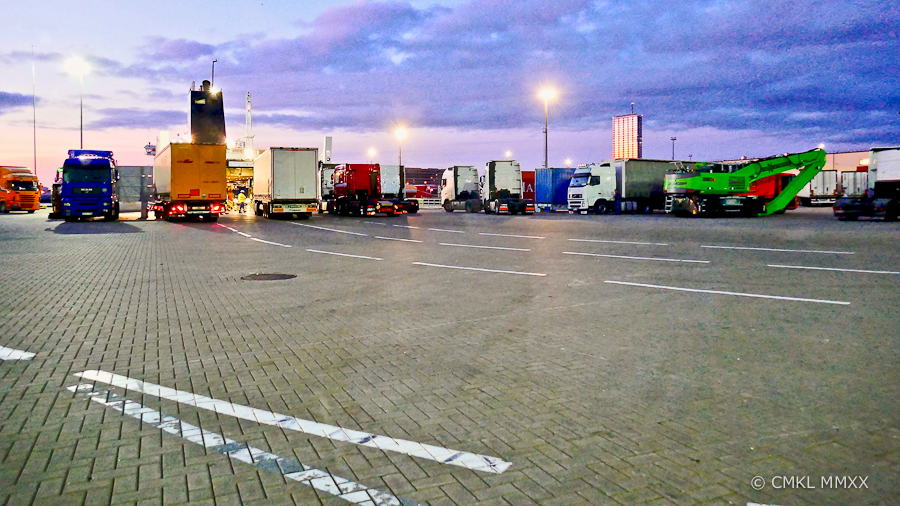
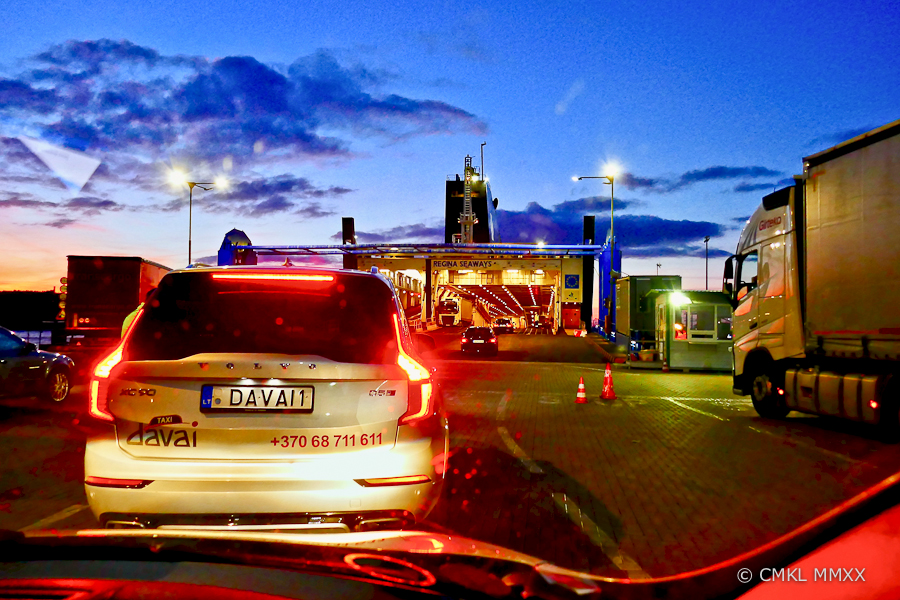
After our very enjoyable trips on both the Finnlines and Tallink/Silja Line, we were looking forward to one more happy voyage on the Baltic Sea, but it didn’t quite work out as anticipated.
The loading process was the usual slow procession of cars over steep ramps. This time we were going down into the bowels of the ship involving a few tight three-point-turns before we reversed into our parking space well below the waterline. Grabbing our cases, we left in search of the elevators to the passenger decks. However, there were no elevators. None. Anywhere. Instead, we encountered seemingly endless sets of steep metal staircases. Really steep. Maybe ten or twelve staircases in total, I don’t remember precisely, enough to bridge the height of five decks between the cars’ and the passengers’ levels. Passengers coming from their cars were expected to climb these stairs while carrying their luggage. Somehow. Since we still had four traveling days ahead of us, our suitcases were crowded with several changes of clothes, extra shoes and sweaters – it was, after all, late September in northern Europe – plus my computer and photo equipment because one is not supposed to leave any valuables in the unattended car. It was, truly, just a small carry-on suitcase, but oh, was it heavy. Owing to a variety of skeletomuscular dysfunctions, lifting or carrying stuff has been a challenge for me for a very long time, but on this particular trip, I had cracked ribs on top of my accustomed wretchedness. For that reason, we had reserved a handicap cabin because neither of us was physically capable of climbing into or out of an upper berth. I would have expected that handicapped passengers be informed ahead of time about the challenges involved in actually reaching their cabins!
Remembering well the overriding motto for all sailors “one hand for the boat, one hand for yourself”, I pulled myself up the rungs with my right hand, while my suitcase dangled from my left hand which wasn’t the most delightful exercise imaginable. After two staircase segments, I had to give up. My husband, who climbed the stairs behind me, told me to wait there, he would bring his case up and then come back to collect mine, when the gentleman ahead of me in this seemingly endless line of passengers ascending this Escheresque stairwell turned back. He grabbed my case and without a word continued upward. I believe, he had wings folded under his baggy suede jacket!
After gaining the passenger deck, our angel disappeared and we spent the next hour in line for the mandatory check-in at the main desk. We alternated standing-in-line duty with relieving our respective back strain in a chair nearby. Again, this was in such a stark contrast to our Finnlines experience in Travemünde. There, we were given our [sustainable cardboard] room keys and our table assignment for the dining room at the drive-through check-in. Even on the Regina Seaways, we were eventually sorted and found our cabin to collapse for a little while on the very comfortable berths. Dinner proved to be yet another disappointment. A long, long, queue of passengers terminating at the one and only serving line of boring food to be consumed in a low-ceilinged, overly warm and stale-smelling cafeteria. Am I cynical? I don’t think so. We pre-paid quite a bit for our on-board meals and were not willing to eat cold food with flimsy plastic cutlery. Instead, we asked for admittance to the Mare Balticum restaurant. They kindly credited our cafeteria tickets and we gladly paid the modest surcharge. The food wasn’t any better, it was after all cooked in the same kitchen, but it was hot, served in pleasant surroundings and there was a wine selection with which to wash it down.
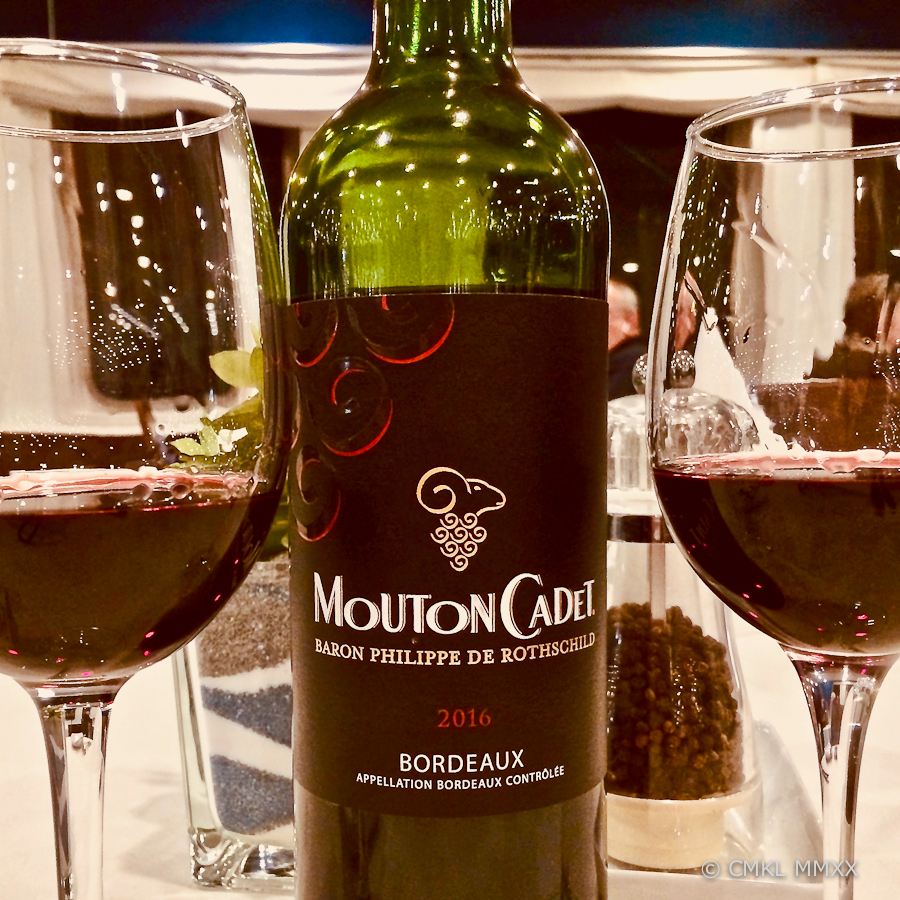
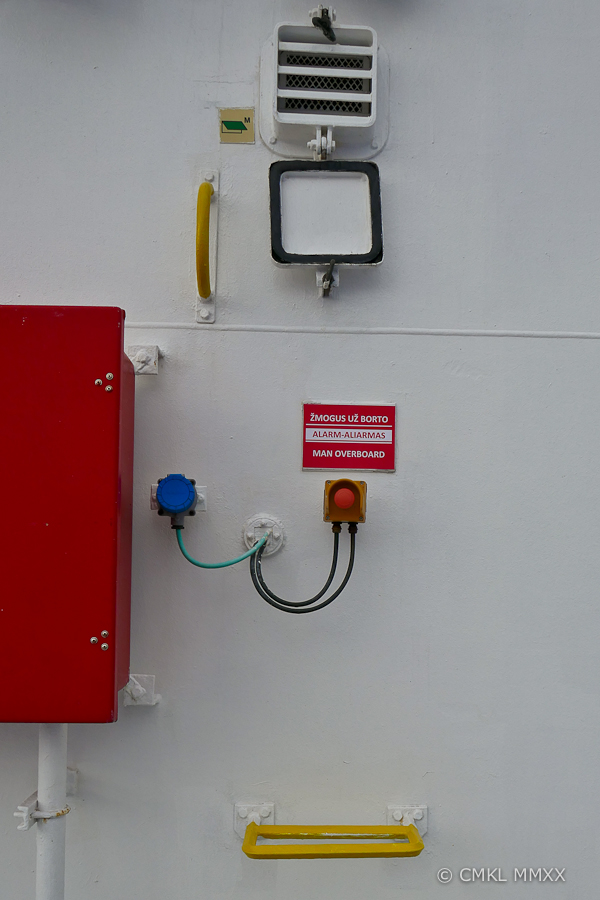
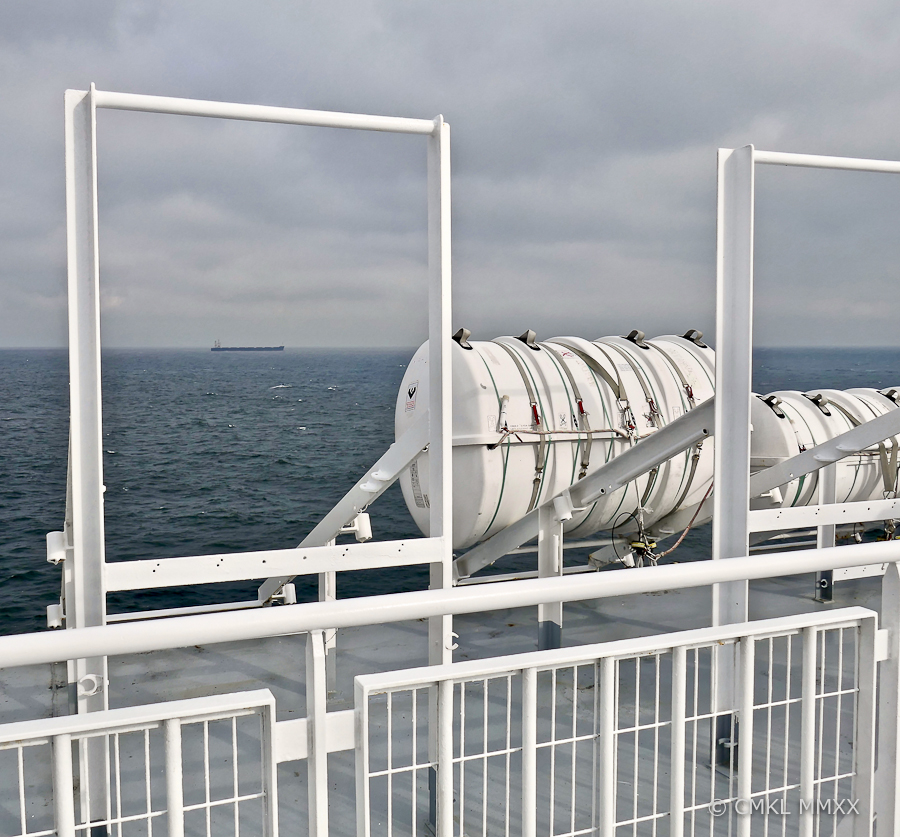
After a restful night, the day at sea passed quickly and by early afternoon we entered the narrow inlet of the Baltic Sea called Kieler Förde the southern tip of which formes the multi-purpose harbor of the City of Kiel, our destination. Before long we saw the distinctive silhouette of a well-loved landmark in the Kieler Förde, the tower of the Marine Ehrenmal or the Laboe Naval Memorial.
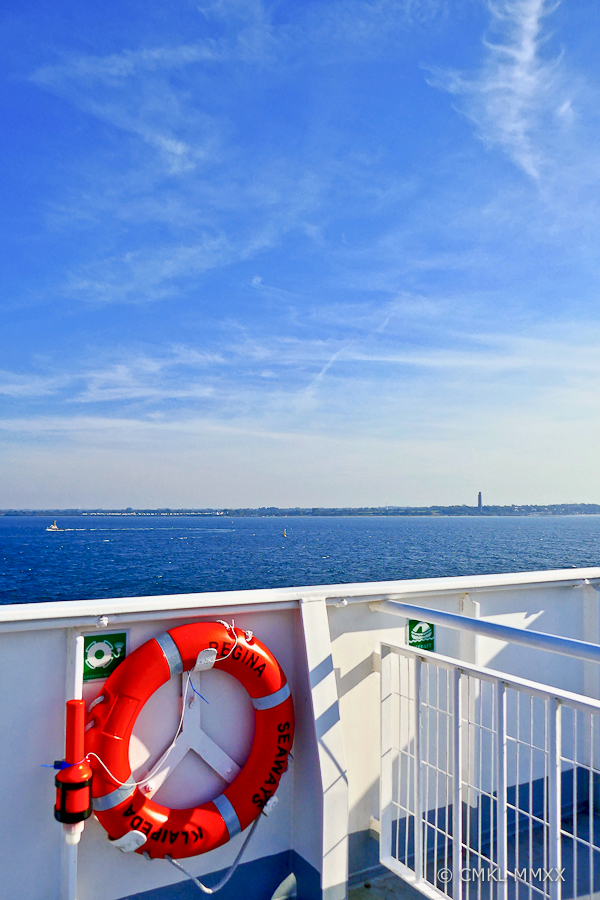
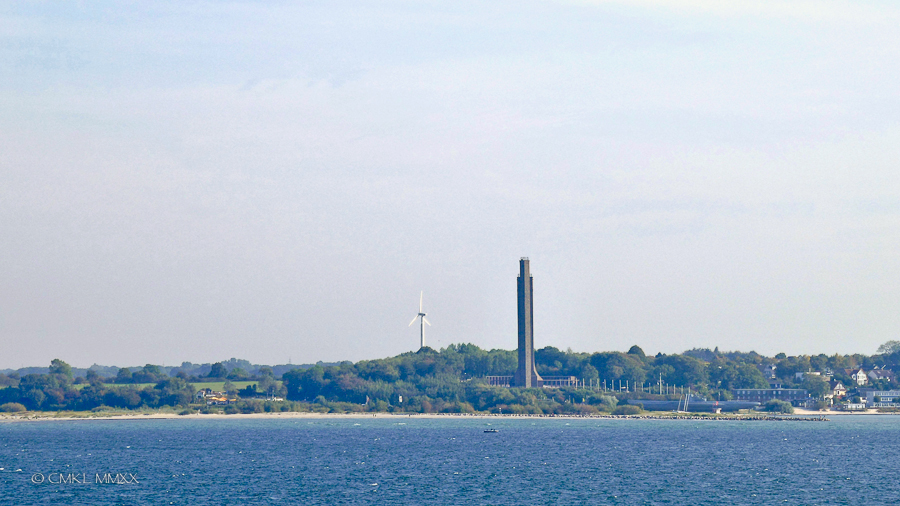
The Naval Memorial was built in the late 1920s to honor the dead of the Imperial Navy during WWI. Later, the mariners perished during WWII were added to the memorial’s roster. In 1954 the Memorial was rededicated to sailors of all nations who lost their lives at sea. The viewing platform 85 meters above sea level is a popular tourist attraction. On the beach below the tower, the world’s last extant class VII-C/41 submarine, the U-995 is permanently beached in the sand. During the war, the agile boats were called Hecht* by their crews, meaning pike, Esox lucius – pikes, fittingly, are ambush hunters. Hechte hunted in groups termed Wolfpacks, and the submariners serving in the pikes were referred to as Grey Wolves. All of this terminology goes back to the designation of this class of submarine as Jagd-U-Boote**, Hunting Submarines.
When my father finished high school, he, together with all of his classmates in his boys-only high school reported to the naval recruitment office to sign up for submarine service. For the boys, this was the height of heroism, a romantic adventure in the service of the Fatherland. Everyone but my father became a Grey Wolf. None of them but my father came home. My enlightened grandfather, who knew in his bones that war was inevitable, had secretly enlisted his son in the Navy Medical Corps instead. In consequence, my father was the only one of his graduating class to survive the war, the guilt of which never left him. He and I sailed every now and then in these waters, never without saluting his lost mates, whom he finally joined 50 years later in his Burial-at-Sea in the North Sea off Helgoland.
We, meanwhile, were scheduled to disembark in Kiel at 5 PM. Since embarking had posed such a challenge for us, I talked with a ship’s officer*** to find a way to improve our exit. Maddeningly, there was no help extended to us at all. Not even the option to pay a crew member to carry our cases to the car deck ahead of time. I’m usually pretty successful when plotting and whining to get my way but this time my charm offensive failed miserably.
The ominous Staircase of Doom terminated in the cafeteria, so we settled early in the booth nearest the stairs to await the public announcement system’s tinny voice to say, on your marks, ready, go! While we waited, a group of four guys settled in the booth next to ours. They spoke in an unidentifiable, vaguely Russian sounding language which later turned out to be mostly Belarusian and also some Lithuanian. Being utterly shameless, I approached their booth and introduced myself to the group. They didn’t understand much English beyond “hello” and “thank you”, but with a little German and lots of pantomimes thrown in, I explained our predicament. One of them immediately understood. He assured me, somehow, that they would be glad to help us out with our luggage. When the announcement came that passengers should assemble in the cafeteria for the disembarkment procedure, one of them, the Lithuanian with whom I had mostly interacted, grabbed both our cases and carried them like feather-light little zippered nothings all the way down to the car deck level. The access door, however, remained locked for another eternity or two. Thus, the six of us spent a lot of time together on the landing in front of the locked door to the car deck while the staircase behind or rather above us quickly became congested with impatient passengers that had nowhere to go.
The four friends turned out to be long-haul truckers who liked to drive together in their long trips across Europe. They were on their way to Denmark in a company mini-van to pick up the trucks for their next assignments. The Lithuanian, whose name I sadly never understood, was such a sweet man and clearly would have liked to talk more with us. In the former East-Block countries pretty much everybody but the very young speak at least a little Russian, it’s their common cross-border language if you will. Unfortunately, my Russian, studied nearly 50 years ago for just one semester, is severely limited. For some bizarre reason, I only remember odd words like Охотское море, the Okhotsk Sea, and similarily useful terms, so we just smiled a lot while hanging out on that small landing together and when the door finally opened, we hugged and kissed good-bye like old friends and wished each other luck in our journeys through life.
The roll-off was handled by an obviously experienced and self-assured crew, reminding me of the white-gloved traffic flics when driving through Paris in my youth. When a car parked to our left attempted to jump the line, he was whistled to a complete stop immediately and had to wait until everyone else had passed him. My husband gave the crew member who disciplined that impatient driver a big thumbs-up when it was our turn. He thanked us with a big smile and a bow, and he was extra helpful in elegantly signaling the tight turns necessary to access the steep off-ramp.
Daylight was fading fast when we began our road trip toward home. In Kiel, we worked our way through the city in heavy traffic, light rain, and a lot of road construction. Then we proceeded in the direction of Hamburg. Our goal was to stay overnight in a hotel south of Hamburg so we wouldn’t lose time in its famously dense rush-hour traffic the next morning. By eight in the evening, we had gained enough distance in direction of Bremen to feel comfortable to stop and enjoy some soup before falling into bed.
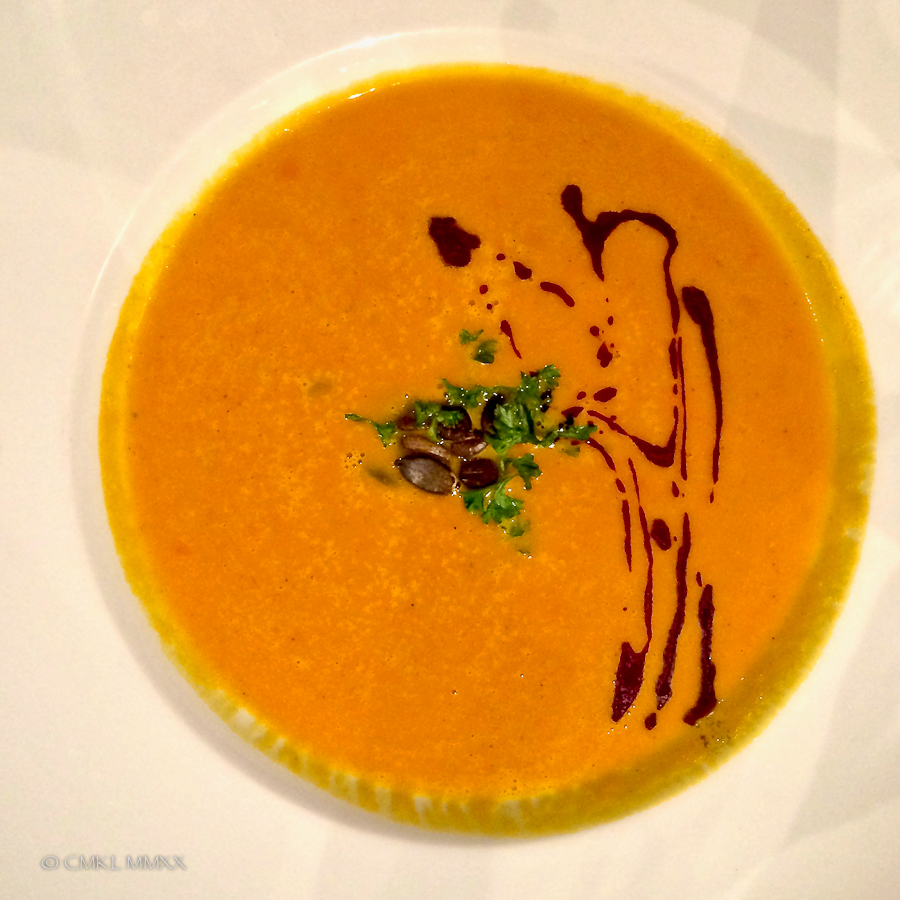
The following day was perhaps the longest driving day of our trip, made more difficult through my rib injury. When fatigue set in, it became impossible for me to shift into our faithful Renault’s higher gears which made it necessary to split the shifting action between us. I depressed the clutch while Barry moved the stick. Awkward, but doable, even though it meant that he couldn’t rest much during my driving stints.
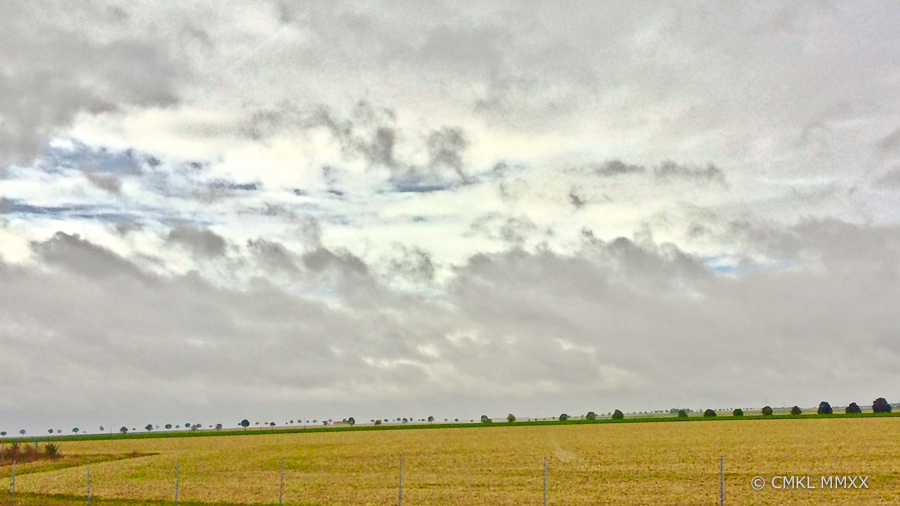
Needless to say, we were quite relieved when we reached our B&B in the Champagne region after crossing northern Germany and Belgium.
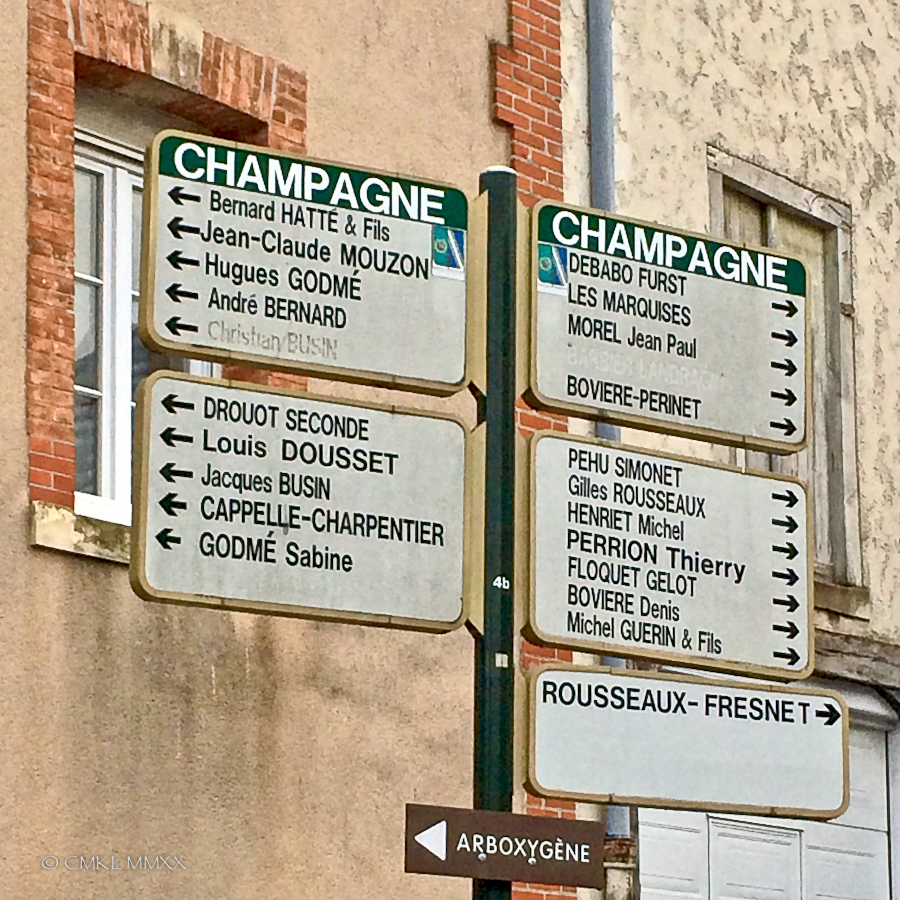
Our B&B owners were also champagne producers and they added a complimentary bottle to our table d’hôtes evening meal.
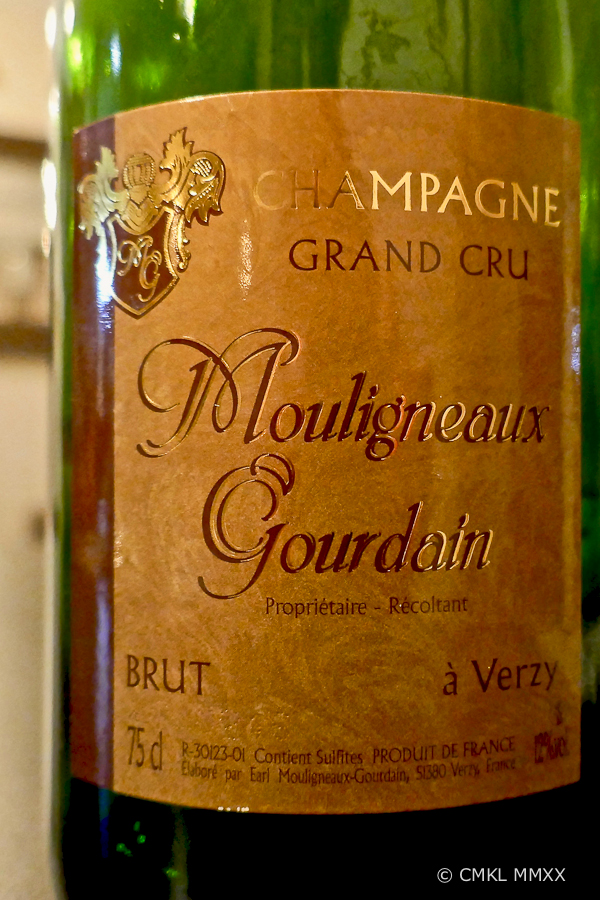
Finally, our last travel day dawned, taking us home to Cognac after 4,178 kilometers driven and 1,262 nautical miles sailed for a grand total of 6,516 Km or a little more than 4000 miles traveled in 23 days through 7 countries.
It was fun to be home again and unpack our assorted souvenirs! We were, however, too late for the fig harvest …
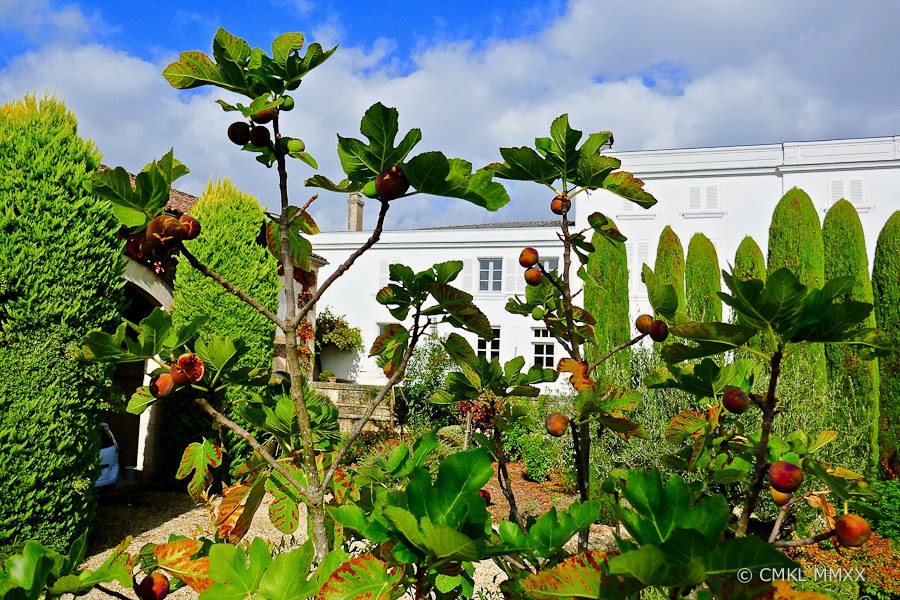
* In 1944 a two-man submersible called Hecht was ordered by the Kriegsmarine but never saw service.
** Perhaps the most famous type VII-C submarine was the U-96 featured in the movie Das Boot.
*** Despite their very different levels of customer service, DFDS Seaways, Finnlines, Tallink/Silja Line, Brittany Ferries, and many more ferries in the UK & Ireland all belong to the DFDS consortium.










Good morning, Matti. Thanks for your comment. I read about the beautiful barquentine Meridianas and her history while researching my post. Quite a story! I enjoy very much learning more details about our travel destination as I edit my photos. Have a wonderful weekend and stay safe!!
LikeLike
Hello Claudinha.
I love this interesting post. Thank you. There was one thing which captured my eyes – Meridians! It has been built in Turku, Finland! It is part of War reparations:
https://en.wikipedia.org/wiki/Finnish_war_reparations_to_the_Soviet_Union
Finland was the only country in the world to pay the war reparations imposed on it!!!
I guess, that you do not know that have built World’s Biggest Cruise Ship! My post:
Allure of the Seas – world’s biggest cruise ship
Stay safe and healthy!
LikeLike
Ain’t that the truth! Thank you and best of luck to you as well!
LikeLike
God Save friendly handling charming truck drivers. What a story. Glad, you made it safe home. Best of luck.
LikeLike